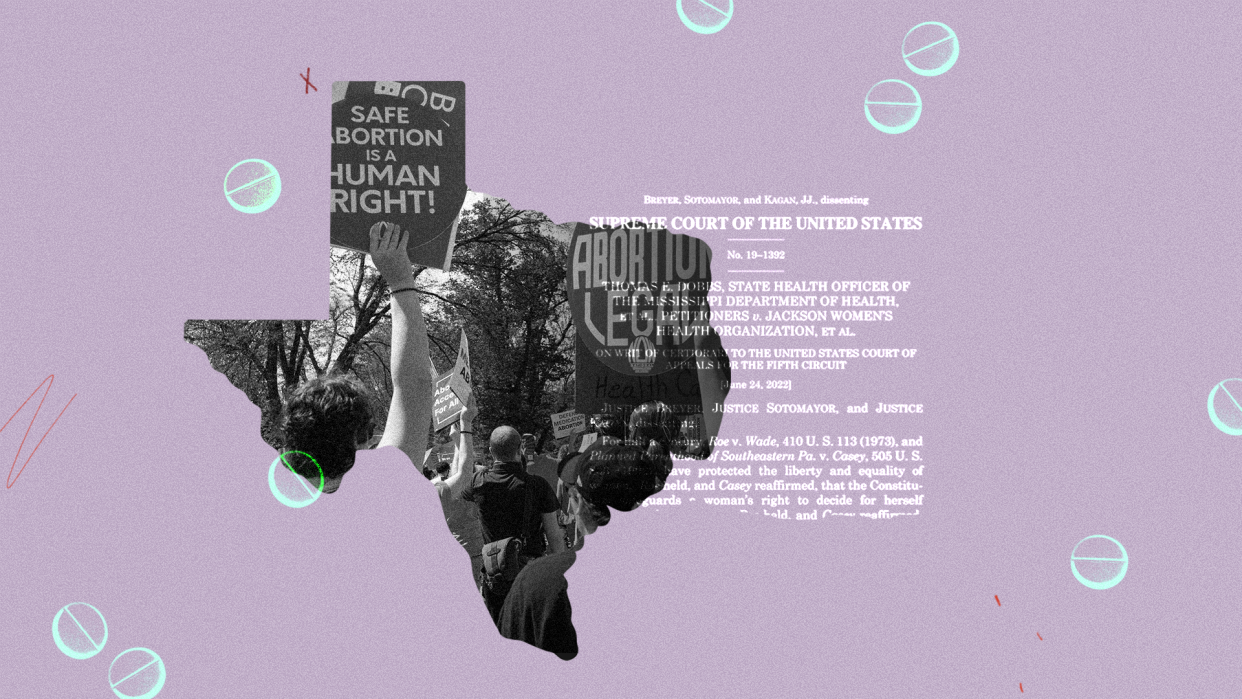#How Roe being overturned has put women’s lives at risk

Table of Contents

Roe v. Wade, the landmark ruling that guaranteed women in the U.S. the right to an abortion, was overturned a year ago with Dobbs v. Jackson Women’s Health Organization. Since then, stories of women struggling to find reproductive care — often after experiencing life-threatening complications of wanted pregnancies — have continued to make headlines.
Women have shared devastating stories of nearly dying before doctors in states with strict abortion laws could legally intervene to help provide care that, just a year ago, was considered standard. On the anniversary of the end of Roe v. Wade, here’s a look at just a few of the alarming stories that have surfaced and what it means to be a woman of reproductive age in the U.S. right now.
• Melissa Novak, a 40-year-old woman in Georgia, learned eight weeks into a wanted pregnancy that she had miscarried. Novak previously told Yahoo Life that she decided to have a medication abortion to manage the miscarriage, which usually involves taking the prescription drugs mifepristone and misoprostol. However, her ob-gyn said she could prescribe only misoprostol because of strict laws in Georgia. Novak says she started bleeding four hours after inserting four misoprostol pills vaginally at home as instructed, but she was still bleeding when she came home from a family trip. Four days later, Novak felt like she was coming down with a cold, followed by a fever. “My whole body was shaking, with intense pain in my lower back,” she said. She went to the emergency room, where doctors discovered she was in septic shock, a life-threatening condition caused by a bacterial infection from tissue that remained after an incomplete abortion. “I was having trouble talking because I was in agony,” she said. “I was so tired and I’m suffering in this way and it’s beyond what I think I can handle.” Novak remembers thinking at one point that she could die. She had a surgical procedure called a D&C to remove the pregnancy tissue and eventually recovered. “I’ve never felt so powerless,” she said.
• Lauren Miller, a 36-year-old woman in Texas, found herself unexpectedly needing abortion care after discovering that one of the twin boys she was carrying, whom she named Thomas, had fetal abnormalities that were incompatible with life. Miller had to travel to Colorado to have an abortion to save her healthy baby’s life. “Someday, I will hold my boys and tell them that I love them and that for a few weeks, they had a little brother named Thomas,” she told the Guardian. “Thomas who never lived, but will be with us forever. I will explain that mercy can be heartbreaking. I will explain that the abortion for their brother was out of love.” Miller is now suing the state of Texas, alongside 14 other plaintiffs, for being denied access to life-saving abortion care; the lawsuit is backed by the Center for Reproductive Rights.
• Texas resident Amanda Eid became pregnant after a year and a half of fertility treatments, but her water broke just four months into her pregnancy. “I just kept asking, ‘Isn’t there anything we can do?’ And the answer was ‘no,’” she told CNN. Eid’s baby, who she named Willow, still had a heartbeat and, under Texas law, her doctors couldn’t intervene, even though the baby would not survive. Doctors told Eid to go home and wait for signs of a life-threatening infection. Three days later, it came. “We were having a heat wave, I think it was 105 degrees that day, and I was freezing cold, and I was shaking, my teeth were chattering,” she said. “I was trying to tell [her husband] Josh that I didn’t feel good, and my teeth were chattering so hard that I could not even get the sentence out.” Eid was taken to the hospital, where she was given IV antibiotics and a blood transfusion. She still developed signs of sepsis and was taken to the ICU. Family members flew in from across the country because they feared she would die. Eid recovered, but her uterus suffered scarring from the infection, and she may not be able to have more children.
•Jessica Bernardo spent years trying to conceive before becoming pregnant with her daughter, Emma. But Bernardo, who lives in Texas, discovered 14 weeks into her pregnancy that Emma had Down syndrome, along with an underdeveloped heart and a rare, deadly disorder called fetal anasarca, which causes fluid to build up in the fetus’s body. “He handed me a tissue box,” Bernardo told the Associated Press of her doctor. “I thought maybe the worst thing he was going to tell us was that she’s going to have Down syndrome. Instead, he said, ‘I can tell you right away . . . she wouldn’t make it.’” Bernardo’s blood pressure started climbing and her ob-gyn met with her hospital’s ethics board to see if her pregnancy could be terminated. She was told Bernardo wasn’t sick enough, so Bernardo had to spend $7,000 to travel to Seattle to have an abortion. “Had I not received an abortion, my life would have very likely been on the line,” Bernardo said.
• Mom of three Jaci Statton was diagnosed with a partial molar pregnancy — which is not viable — and three precancerous cysts in her uterus, but she was unable to receive the care she needed due to Oklahoma law. Statton was sent to several hospitals and repeatedly turned away. “They admitted me, did another ultrasound . . . and the cancer pockets had basically took over my placenta and the area around the baby,” she told Today. “A team of seven specialists came in . . . they told us: ‘We can’t do anything. You may have two weeks to live. The baby won’t even make it to two weeks. You need an abortion, but we can’t touch you.’” Statton says doctors told her she could travel either to Kansas, Colorado or New Mexico for an abortion or “sit in the parking lot” and wait to get worse. She and her husband traveled 3.5 hours to Kansas to get an abortion. Statton now says she’s “terrified to get pregnant again.”
‘It has been devastating’
“It’s hard to underscore enough the legal and public health chaos and crisis that has occurred,” Michelle Banker, director of reproductive rights and health litigation at National Women’s Law Center, tells Yahoo Life. “This is the first time that a constitutional right has been taken away from us. It affects people in so many areas of their lives. From a legal standpoint, it’s been chaos. from a public health standpoint, it has been devastating.”
While abortion bans are often designed to prevent women from accessing care for unwanted pregnancies, it has the unintended effect of causing devastation and life-threatening complications for women with desired pregnancies, Katrina Kimport, a qualitative medical sociologist at the University of California, San Francisco, whose research focuses on gender, health and reproduction, tells Yahoo Life. “The way that these bans are written ties the hands of doctors who are caring for people who have medical emergencies,” she says.
Kimport adds: “There are a shocking and deeply upsetting number of ways that pregnancy can go wrong. It’s very consequential and serious. Doctors are not able to offer evidence-based medicine in states where abortion is banned or restricted.”
The end of reproductive rights that had been granted by Roe v. Wade “definitely worsened U.S. maternal mortality rates,” Noreen Farrell, executive director of Equal Rights Advocates, tells Yahoo Life. “It doesn’t just impact access to abortion — these are resulting in clinics being shut down altogether. People who can become pregnant aren’t even able to access reproductive information or birth control.”
Experts say it’s crucial to vote
The 2024 election may show fallout from all of this, say experts. “We know that Americans broadly support access to abortion care in the U.S.,” Kimport says. “Whether the legislation will catch up is an open question.”
Banker says she’s hopeful that the status quo will improve in the near future. “I have hope,” she says. “So far, voters have voted to protect abortion.”
Farrell says it’s crucial for people to get out and vote in favor of reproductive rights. “The lives of millions are at risk if we don’t come together and fight for reproductive care and abortion access,” she says.
Wellness, parenting, body image and more: Get to know the who behind the hoo with Yahoo Life’s newsletter. Sign up here.
If you liked the article, do not forget to share it with your friends. Follow us on Google News too, click on the star and choose us from your favorites.
For forums sites go to Forum.BuradaBiliyorum.Com
If you want to read more News articles, you can visit our News category.




